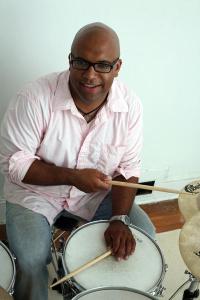Guest post from New York City-based professional drummer, Mike Veny.
Drum fills can be one of the biggest challenges for drummers at all levels. Whether it’s the constant search for fresh fill ideas or the challenge of executing fills within a song, drummers are constantly in search for an answer. Lately, fills have come more naturally to me than ever before. In fact, I don’t even think about them when I play nowadays.
This wasn’t the case a few years ago. Frustrated with my lack of progress in this area, I decided to bring my fill challenge to a new teacher, Tobias Ralph. Known for his insane technique, grooves, and fills, Tobias is a top-notch professional drummer. Through studying with him and Drori Mondlak, I developed some important concepts that have changed my drumming forever.
A Drum Fill Defined
A drum fill is a short musical passage played to transition into a different section of a song, to embellish something else happening in a song, or just played randomly in a song. A drum fill can be one note, many notes, or complete silence.
The Two Islands Mentality
The challenge many drummers have with fills is that they think of them as totally different than drum beats. For example, many people practice playing a drum beat for seven measures, then playing a fill on the 8th measure. By thinking of the fills and beats as two separate islands, flowing between them naturally becomes difficult. If you listen to any great drummer performing, their fills sound like they are part of the beat they are playing (even if the rhythm is different). It’s important to learn to think of fills as part of the beat.
Trusting Yourself
This might be one of the most difficult, but liberating ideas you will ever learn as a musician. While playing a song, there are times when you will start thinking about filling. It might be that you know a new section is coming up or you’re just bored and want to change things up. Regardless, if you learn to allow fills to happen naturally they will sound perfect. Here’s the secret to doing this: don’t judge what you play.
If you learn to stop thinking of beats and fills as two separate islands, and you learn to trust what comes out naturally, you will always play the right fills at the right time.
_______
About the author: Mike Veny is a professional drummer based out of New York City. He has been happy playing drums since 1989. He performs with Sean 360x & the universoul spiRitual Ankhestra alongside Ramsey Jones of the Wu-Tang Clan family. Sean 360x is a MySpace chart-topping artist and has been #1 on the ReverbNation Electronica/Dance charts for over 16 weeks. He also performs with Kim Oler, an Emmy Award winning composer for ABC’s All My Children, As the World Turns,The Tracey Ullman Show, and The Guiding Light.


 All rights reserved.
All rights reserved.
{ 1 comment… read it below or add one }
Very interesting that you pointed out how fills can be a single note or complete silence. Many people (including myself, sometimes) think of fills more as a mini solo that has to be completely filled with notes, but often they’ll end up sounding cluttered and repetitive that way. Also, the part about trusting what comes out naturally, especially not judging what you play, is a good point. Many times I’ve played something that I totally messed up or that sounded nothing like what I wanted it to sound like, but often these are the things that most impress the people listening to me play. I also tend to over-think what I want to play, and it ends up sounding mechanical, rigid, and unnatural. Great article!